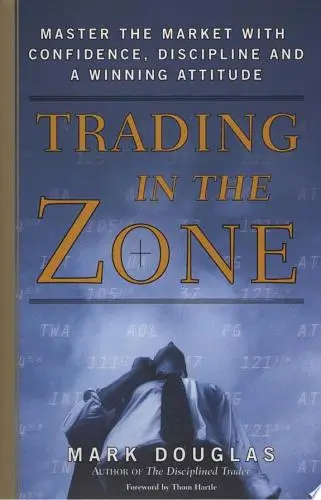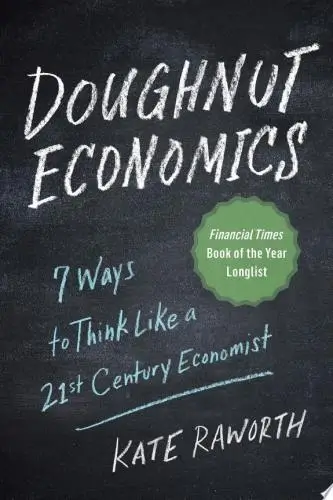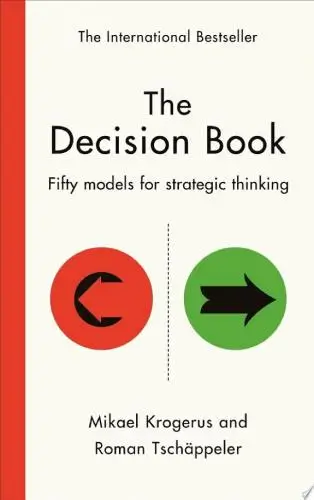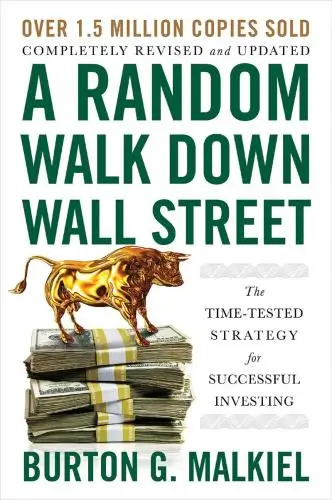A Random Walk Down Wall Street
The Time-Tested Strategy for Successful Investing
What's it about?
A Random Walk Down Wall Street offers you a deep dive into investment strategies, emphasizing that the stock market's future movements are unpredictable. Malkiel argues for a long-term investment approach, using index funds as a cornerstone. Through engaging explanations, you'll learn why attempting to outguess the market is often futile, and how diversifying your portfolio is key to mitigating risk and achieving steady returns. This book is a must-read if you're looking to build a solid foundation in understanding and navigating the complexities of the financial markets.
About the Author
Burton G. Malkiel is an economist and author, best known for his book "A Random Walk Down Wall Street." His work emphasizes efficient market theory and the randomness of stock market prices, advocating for passive investment strategies. Malkiel's accessible writing style demystifies complex financial concepts for general readers.
10 Key Ideas of A Random Walk Down Wall Street
The Inefficiency of Market Predictions: Why You Can't Outguess the Market
This concept emphasizes that stock market movements are largely unpredictable and attempting to forecast short-term market directions is futile.
The reasoning behind this is based on the Efficient Market Hypothesis, which suggests that all known information is already reflected in stock prices.
Therefore, without insider information or the ability to predict future events, it's nearly impossible for an investor to consistently outperform the market through prediction.
Learn DeeperDiversify Your Investments: Instead of trying to predict which stock will perform best, spread your investments across different sectors and asset classes. This can help reduce risk and improve the chances of steady returns over time.
Consider Index Funds or ETFs: These funds aim to mirror the performance of a specific index, such as the S&P 500. Since it's hard to beat the market through prediction, investing in these funds can be a way to match market returns with lower fees and effort.
Stay Informed, Not Reactive: Keep up with financial news and market trends to make informed decisions, but avoid making impulsive trades based on short-term predictions. Remember, it's about time in the market, not timing the market.
Set and Stick to Your Investment Goals: Define your long-term financial goals and investment strategy. Adjust your portfolio as needed based on changes in your life or financial situation, not in response to market speculation.
- Example
If you're considering investing in tech stocks because you believe they will outperform the market, remember the principle of unpredictability. Instead, you might invest in a tech-focused ETF to gain exposure to the sector without betting on individual stock predictions.
- Example
When news breaks that could impact the stock market, instead of rushing to sell or buy based on potential short-term movements, review your investment strategy and goals. If your investments are well-diversified and aligned with your long-term objectives, it's usually best to stay the course.
The Power of Diversification: Spreading Your Investments to Reduce Risk
Diversification is a risk management strategy that involves spreading investments across various financial instruments, industries, and other categories to reduce exposure to any single asset or risk.
The idea is that by diversifying, investors can minimize the impact of poor performance in any single investment.
This is because different assets often perform differently under the same economic conditions, balancing the overall portfolio performance.
Learn DeeperStart with a broad-based index fund: An easy way to begin diversifying is by investing in a broad-based index fund, such as one that tracks the S&P 500. This immediately spreads your investment across 500 of the largest U.S. companies, covering various sectors.
Explore other asset classes: Beyond stocks, consider adding bonds, real estate investment trusts (REITs), and possibly commodities to your portfolio. Each asset class reacts differently to market conditions, helping to smooth out your portfolio's performance over time.
Consider international exposure: Investing in international stocks or funds can provide diversification beyond the U.S. economy, offering potential growth opportunities in emerging markets and developed economies outside the U.S.
Regularly review and rebalance your portfolio: As investments grow or shrink in value, your initial diversification strategy might shift. Regularly reviewing and rebalancing your portfolio helps maintain your desired level of diversification and risk.
- Example
If you have $10,000 to invest, instead of putting it all into a single stock, you could spread it out by investing $5,000 in a U.S. stock index fund, $2,500 in an international stock fund, $1,500 in a bond index fund, and $1,000 in a REIT. This way, your investment isn't tied to the fate of a single company or sector.
- Example
Sarah, an investor, initially invested 70% of her portfolio in stocks and 30% in bonds. After a year of strong stock market performance, her stock investments grew to represent 80% of her portfolio. To rebalance and maintain her desired risk level, she sold some of her stock investments and bought more bonds, returning to her 70/30 allocation.
The Folly of Timing the Market: Why It's Time in the Market, Not Timing, That Counts
Attempting to time the market, or buying and selling based on predictions of market movements, is less effective than investing for the long term.
Historical data shows that markets tend to increase in value over time, and investors who remain invested through market fluctuations generally achieve better returns than those who try to time their entry and exit points.
This is due to the difficulty of predicting short-term market movements and the risk of missing out on periods of significant gains.
Learn DeeperStart Investing Early: The sooner you begin, the more time your investments have to grow. Don't wait for the 'perfect' time to enter the market.
Set Up Automatic Investments: Automate your investing process. This could be through a monthly transfer to your investment account or a direct deposit from your paycheck into a retirement account like a 401(k) or an IRA.
Diversify Your Portfolio: Spread your investments across different asset classes (stocks, bonds, real estate, etc.) to reduce risk. This way, if one sector performs poorly, your entire portfolio isn't drastically affected.
Stay the Course: Avoid the temptation to sell off investments during market downturns. Historically, markets recover over time, and staying invested allows you to benefit from the rebound.
Regularly Review Your Investment Strategy: While it's important to stay invested, it's equally important to periodically review your investment strategy to ensure it aligns with your financial goals and risk tolerance.
- Example
If Jane invests $200 monthly in a diversified index fund starting at age 25, she doesn't try to time the market based on daily news or market predictions. Instead, she continues her regular investments regardless of market conditions. Over decades, this strategy leverages compound interest and market growth, potentially leading to significant returns by the time she retires.
- Example
Bob, after receiving a bonus at work, decides not to wait for a market dip to invest. He understands that trying to predict the market's best entry point is less effective than being consistently invested. He immediately invests his bonus into his diversified portfolio, contributing to his long-term investment growth.
The Myth of Expert Stock Picking: The Challenges of Consistently Beating the Market
This concept challenges the notion that expert stock pickers can consistently outperform the market.
Due to the efficient nature of markets, all available information is typically already factored into stock prices, making it difficult for any investor, regardless of expertise, to consistently make profitable picks.
Studies have shown that actively managed funds often underperform compared to passive index funds over the long term.
Learn DeeperDiversify Your Portfolio: Instead of trying to pick individual stocks, spread your investments across a wide range of asset classes. This can include stocks, bonds, real estate, and more. Diversification can help reduce risk without significantly sacrificing returns.
Invest in Low-Cost Index Funds: Since actively managed funds often underperform passive index funds over the long term, consider allocating a portion of your investment portfolio to low-cost index funds that track the overall market or specific sectors.
Stay Disciplined: Avoid the temptation to constantly buy and sell based on market trends or news. Adopt a long-term investment strategy and stick to it, making adjustments only as necessary based on changes in your financial goals or risk tolerance.
Educate Yourself: Continuously seek out educational resources on investing and the financial markets. Understanding the principles behind successful investing can help you make informed decisions and avoid common pitfalls.
- Example
If you're considering investing in the stock market, instead of trying to pick the next big winner, you might allocate 60% of your investment to a low-cost S&P 500 index fund, 20% to an international stock index fund, and 20% to a bond index fund for diversification.
- Example
When tempted by a hot stock tip from a friend or a financial news headline, remind yourself of the long-term strategy you've set. Review your investment goals and risk tolerance, and if the new information doesn't align with your strategy, stay the course with your diversified, low-cost index fund investments.
The Advantage of Low-Cost Index Funds: Investing in the Market as a Whole
Index funds are mutual funds or ETFs designed to follow certain preset rules so that the fund can track a specified basket of underlying investments.
These funds offer a low-cost way to invest in the overall market or specific sectors, providing diversification and reducing the risk associated with individual stocks.
Since they aim to mirror the performance of an index, they typically incur lower management fees than actively managed funds, leading to better net returns for investors over time.
Learn DeeperStart by researching: Look into various index funds available in the market. Focus on those that track broad market indices like the S&P 500 or the Total Stock Market. This is your first step towards diversification.
Compare fees and performance: Not all index funds are created equal. Pay attention to the expense ratio, as lower fees will directly benefit your long-term returns. Also, review the fund's historical performance to ensure it closely matches its benchmark index.
Consider your investment platform: Whether you're using a traditional brokerage, a robo-advisor, or a retirement account, make sure it offers the index funds you're interested in. Some platforms may offer certain funds with no transaction fees, which can save you money.
Set up automatic contributions: Once you've selected an index fund, automate your investments. This helps in dollar-cost averaging, reducing the impact of volatility, and ensures you're consistently investing towards your financial goals.
- Example
If you're interested in the overall U.S. stock market, you might look into an index fund like the Vanguard Total Stock Market Index Fund (VTSAX), which aims to track the performance of the CRSP US Total Market Index.
- Example
For those leaning towards technology, an option could be the Technology Select Sector SPDR Fund (XLK), which tracks the Technology Select Sector of the S&P 500 Index. This allows investors to specifically invest in the tech sector of the market.
Deeper knowledge. Personal growth. Unlocked.
Unlock this book's key ideas and 15M+ more. Learn with quick, impactful summaries.
Read Full SummarySign up and read for free!
A Random Walk Down Wall Street Summary: Common Questions
"A Random Walk Down Wall Street" by Burton G. Malkiel opens with the impactful quote, "A blindfolded monkey throwing darts at a newspaper's financial pages could select a portfolio that would do just as well as one carefully selected by experts." This sets the tone for the book's argument that stock prices are random and unpredictable, challenging the idea of beating the market through stock picking or market timing.
The book covers various investment strategies, from efficient market hypothesis to technical and fundamental analysis, providing a comprehensive overview of different approaches to investing. The discussion on index funds and the concept of diversification was particularly insightful, offering a practical and evidence-based approach for individual investors.
Overall, "A Random Walk Down Wall Street" is a compelling read for anyone interested in understanding the complexities of the stock market and making informed investment decisions. It urges readers to take a long-term perspective when it comes to investing, emphasizing the importance of diversification and low-cost index funds. If you're looking for a thoughtful analysis of investment strategies and a critical look at the financial industry, this book is a must-read.
Experience Personalized Book Summaries, Today!
Discover a new way to gain knowledge, and save time.
Sign up for our 7-day trial now.
No Credit Card Needed

Similar Books

The Art of Spending Money
Morgan Housel
Trading in the Zone
Mark Douglas
Doughnut Economics
Kate Raworth
A study guide for Barbara Ehrenreich's "Nickel and Dimed: On (Not) Getting By in America"
Gale, Cengage Learning
Bitcoin For Dummies
Prypto
Debt
David Graeber
The Barefoot Investor
Scott Pape
Money Has No Value
Samuel A. Chambers
Financial Peace
Dave Ramsey
Capital in the Twenty-First Century
Thomas PikettyTrending Summaries

Peak
Anders Ericsson
Never Split the Difference
Chris Voss
Smart Brevity
Jim VandeHei
The Psychology of Money
Morgan Housel
The First 90 Days
Michael D. Watkins
Atomic Habits
James Clear
Thinking, Fast and Slow
Daniel Kahneman
The Body Keeps the Score
Bessel van der Kolk M.D.
The Power of Regret
Daniel H. Pink
The Compound Effect
Darren HardyNew Books

The Decision Book
Mikael Krogerus
The Decision Book: 50 Models for Strategic Thinking
Mikael Krogerus
Fichte
Johann Gottlieb Fichte
Do No Harm
Henry Marsh
This is Going to Hurt
Adam Kay
This Is Your Brain on Joy
Earl Henslin
Learning Habits
Sarah Nicholl
TOP KNIFE: The Art & Craft of Trauma Surgery
Asher Hirshberg,
English Spirituality
Gordon Mursell

